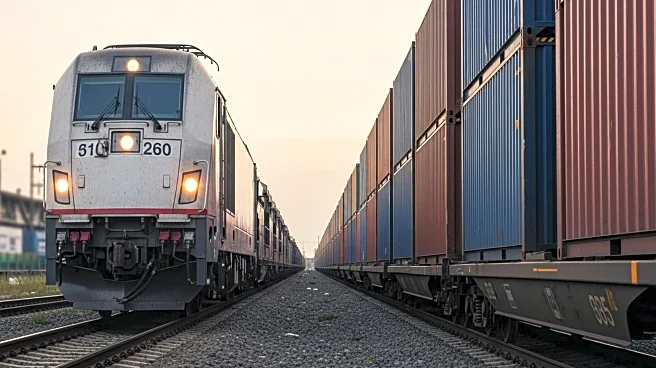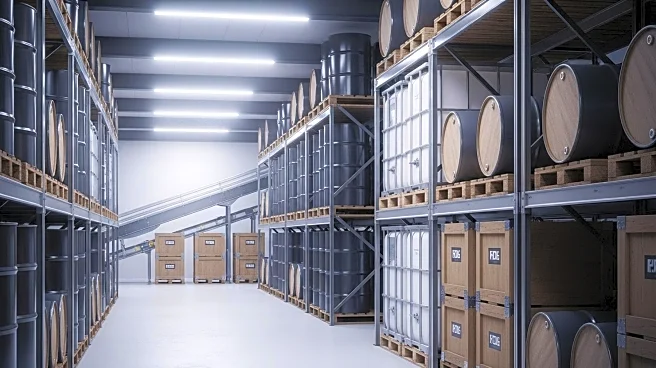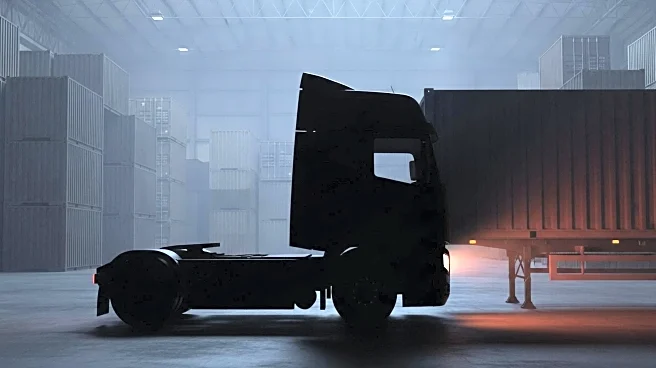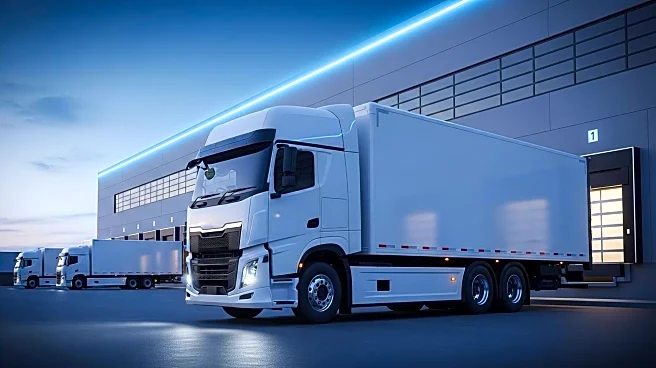What's Happening?
The Association of American Railroads (AAR) has released data indicating mixed results for U.S. rail carload and intermodal volumes for the week ending August 23. Rail carloads saw a slight annual increase of 0.6%, reaching 229,783, surpassing previous weeks' figures. Gains were noted in commodity groups such as grain, motor vehicles and parts, and farm products excluding grain and food. However, declines were observed in petroleum and petroleum products, coal, and miscellaneous carloads. Intermodal containers and trailers experienced a 1.9% decrease compared to the same week last year. Despite these mixed results, the overall annual figures for rail carloads and intermodal units show growth, with carloads up 2.6% and intermodal units up 4.2% for the first 34 weeks of 2025.
Why It's Important?
The mixed performance in rail carload and intermodal volumes reflects broader trends in the U.S. logistics and transportation sectors. The increase in certain commodity groups suggests resilience in specific industries, such as agriculture and automotive, which are crucial to the U.S. economy. Conversely, declines in petroleum and coal shipments may indicate shifts in energy consumption patterns or economic challenges in these sectors. The overall growth in rail and intermodal volumes highlights the ongoing importance of rail transport in supporting supply chains and economic activity. Stakeholders in logistics, manufacturing, and energy sectors will need to adapt to these changing dynamics to optimize operations and maintain competitiveness.
What's Next?
Future developments in rail transport volumes will likely be influenced by economic conditions, policy changes, and industry-specific factors. Stakeholders may focus on enhancing efficiency and sustainability in rail operations to address fluctuating demand and environmental concerns. Additionally, potential infrastructure investments and technological advancements could play a role in shaping the future of rail transport in the U.S.











